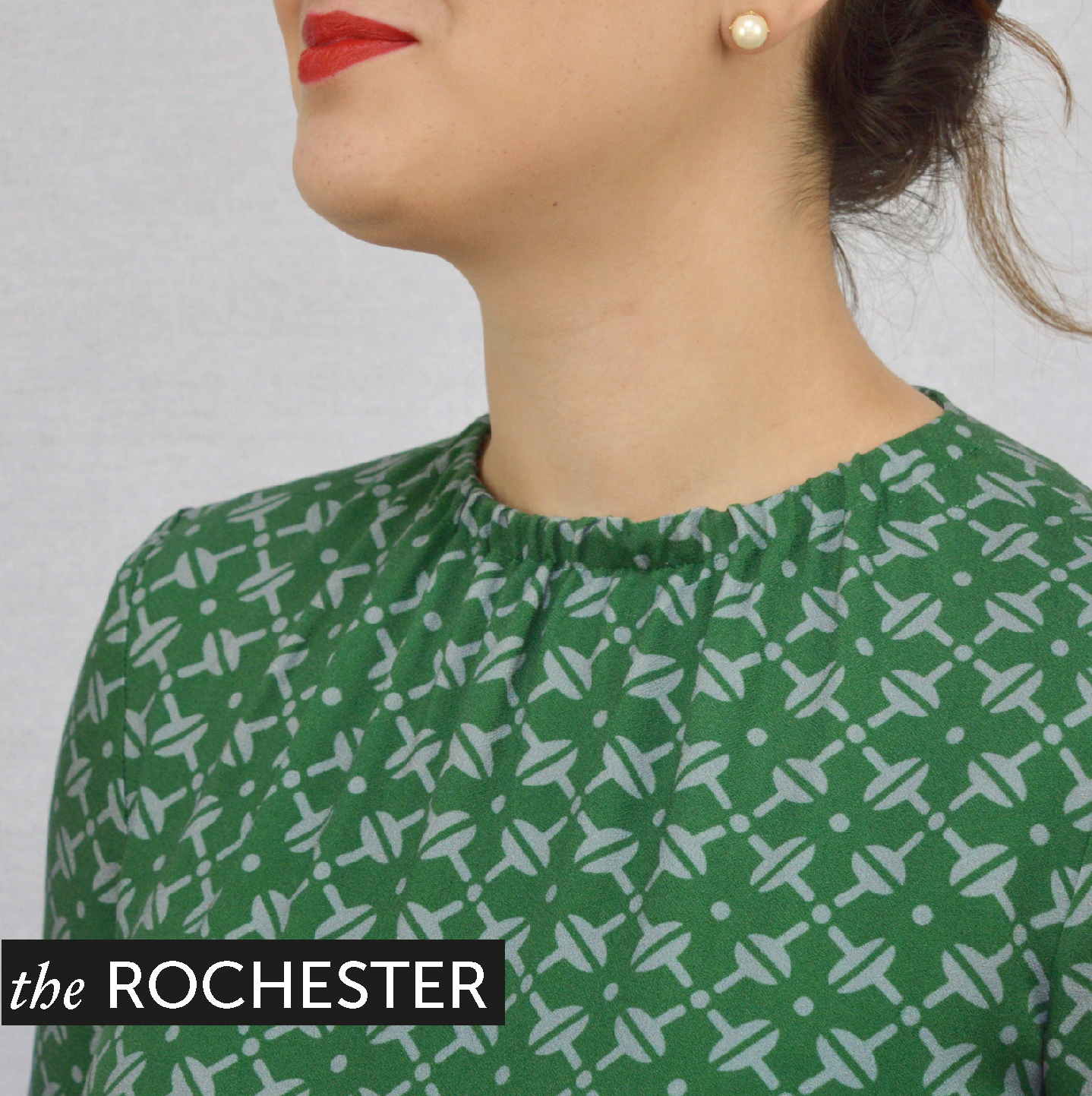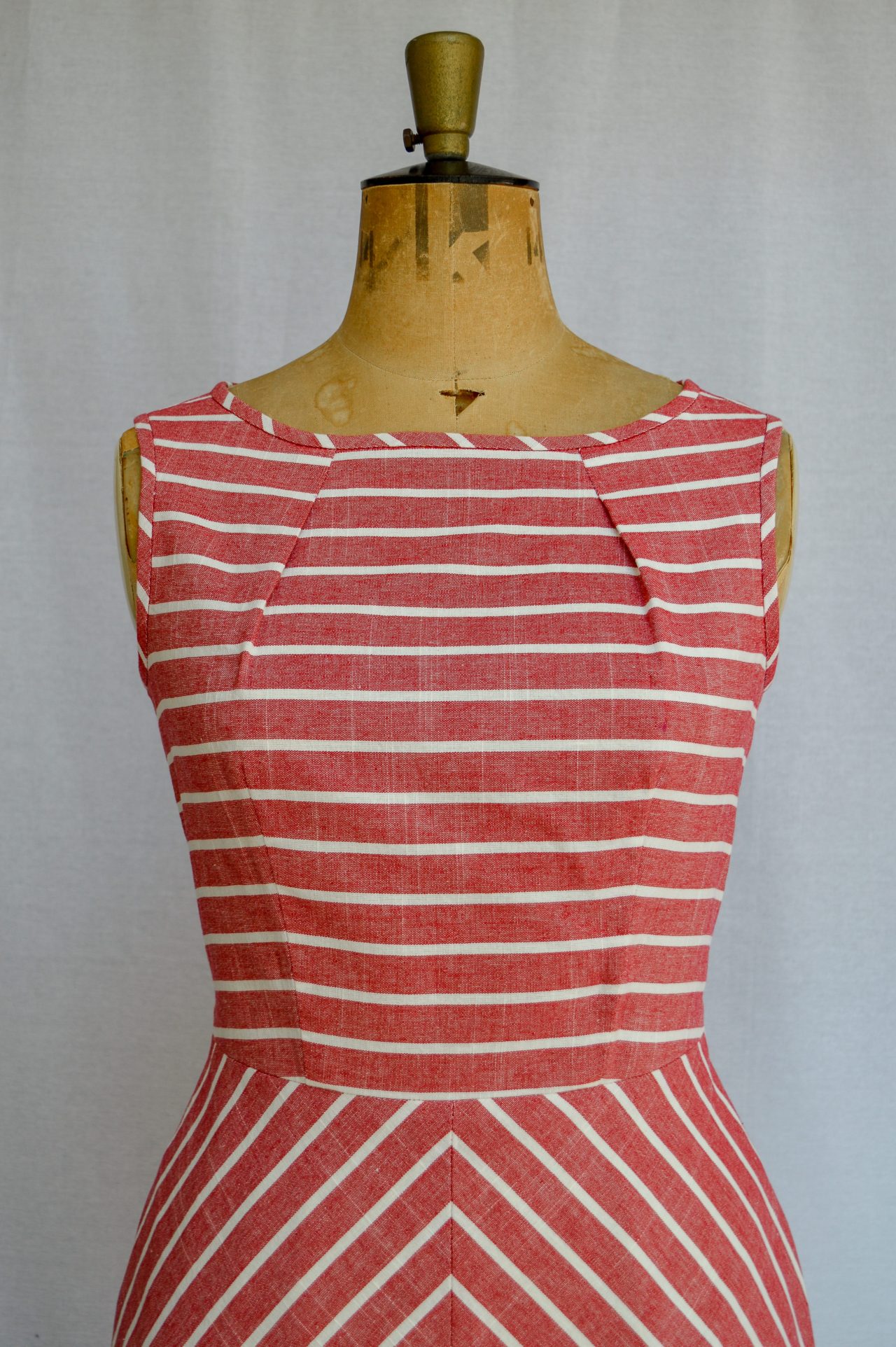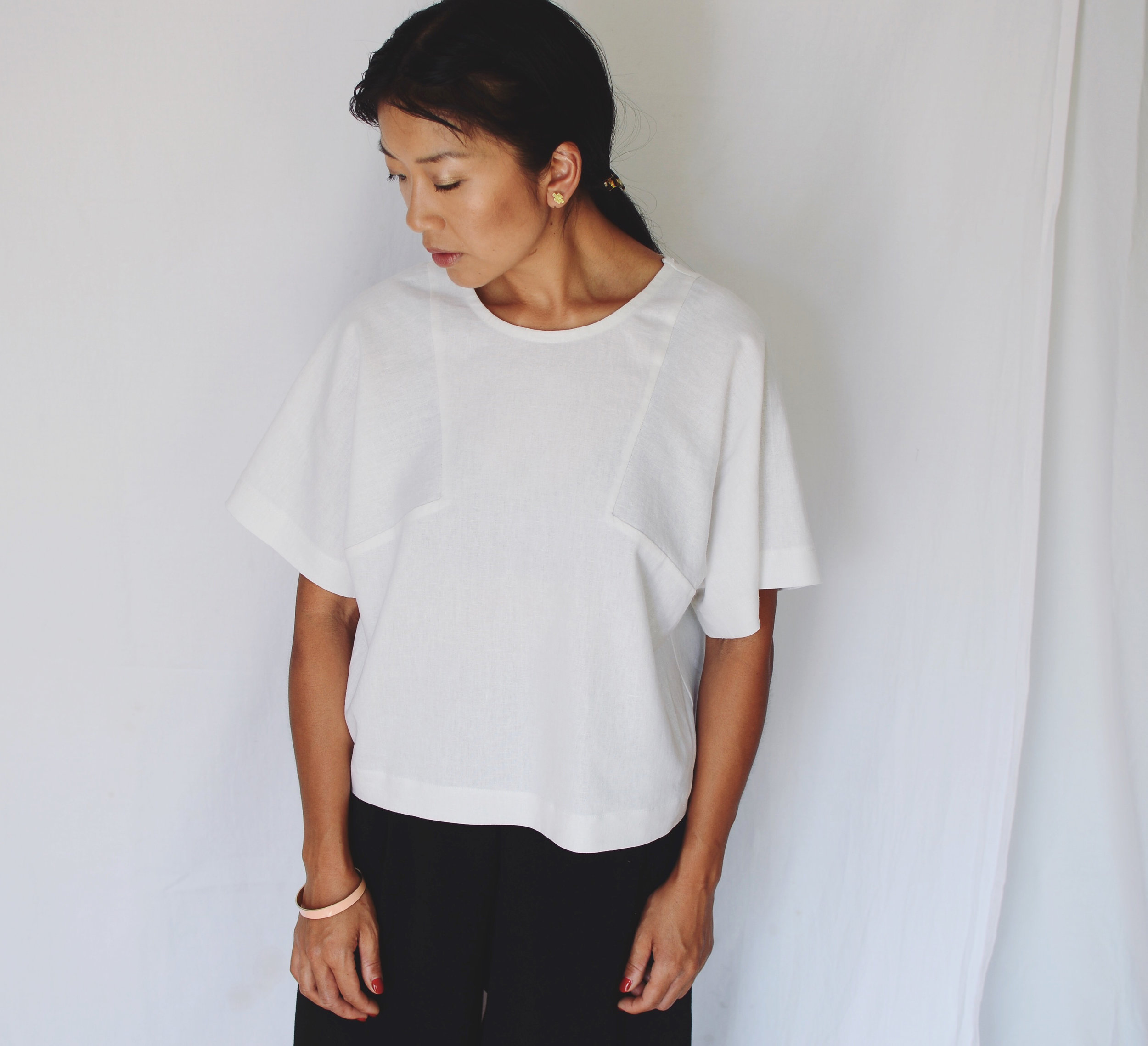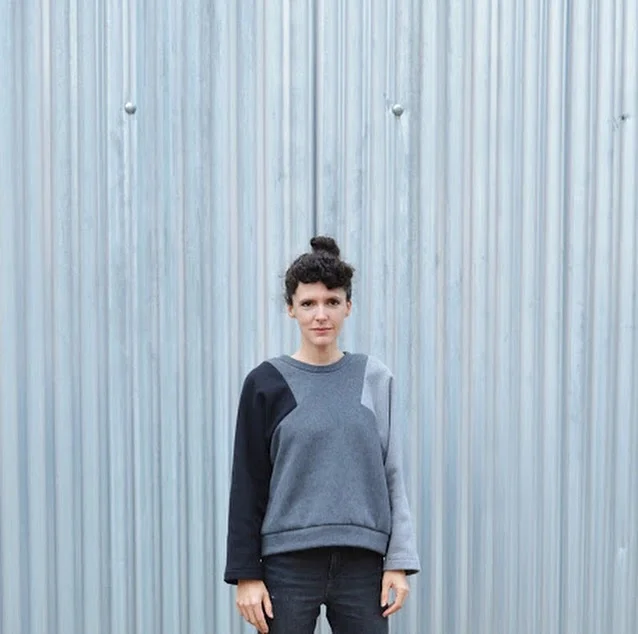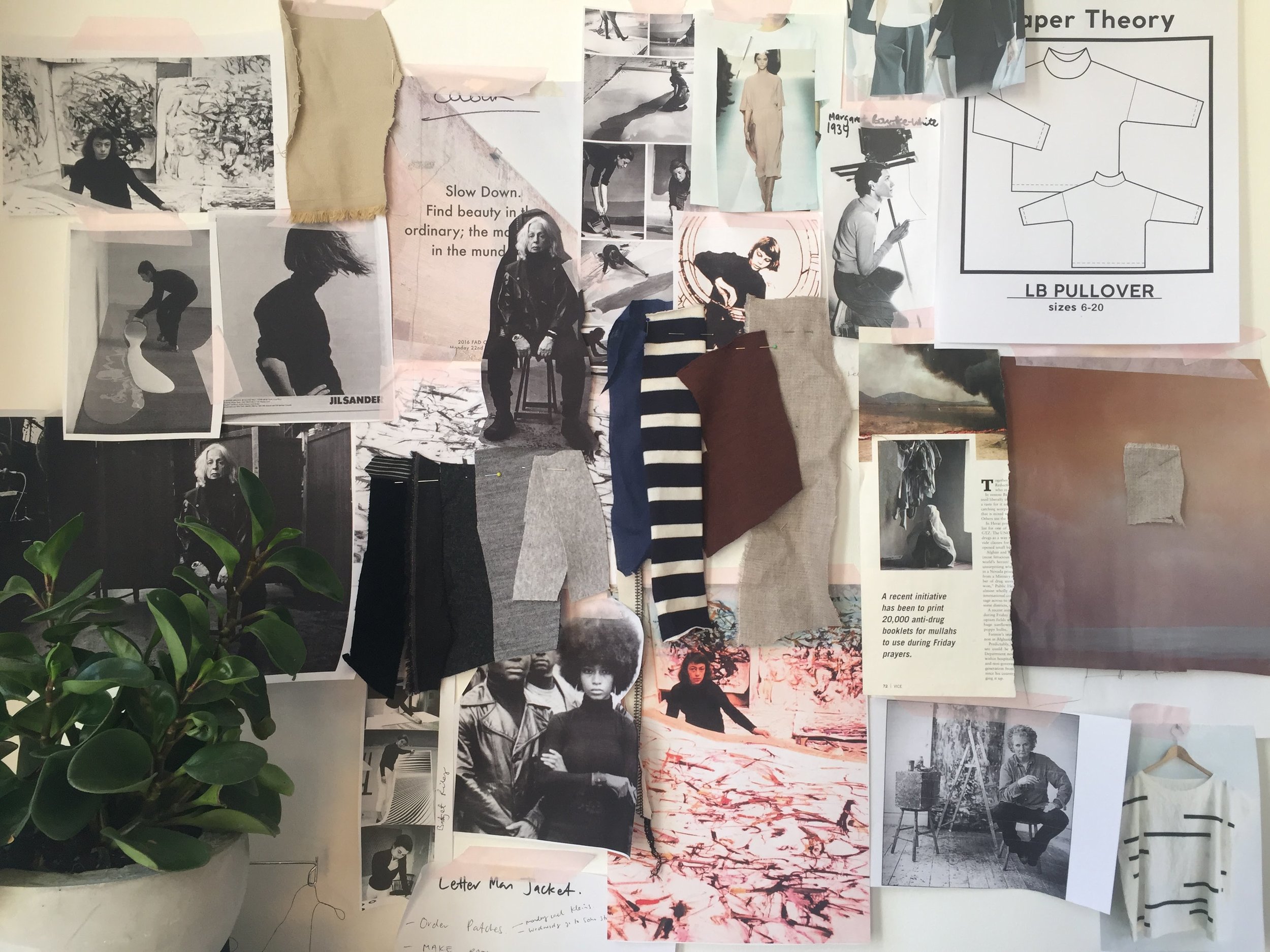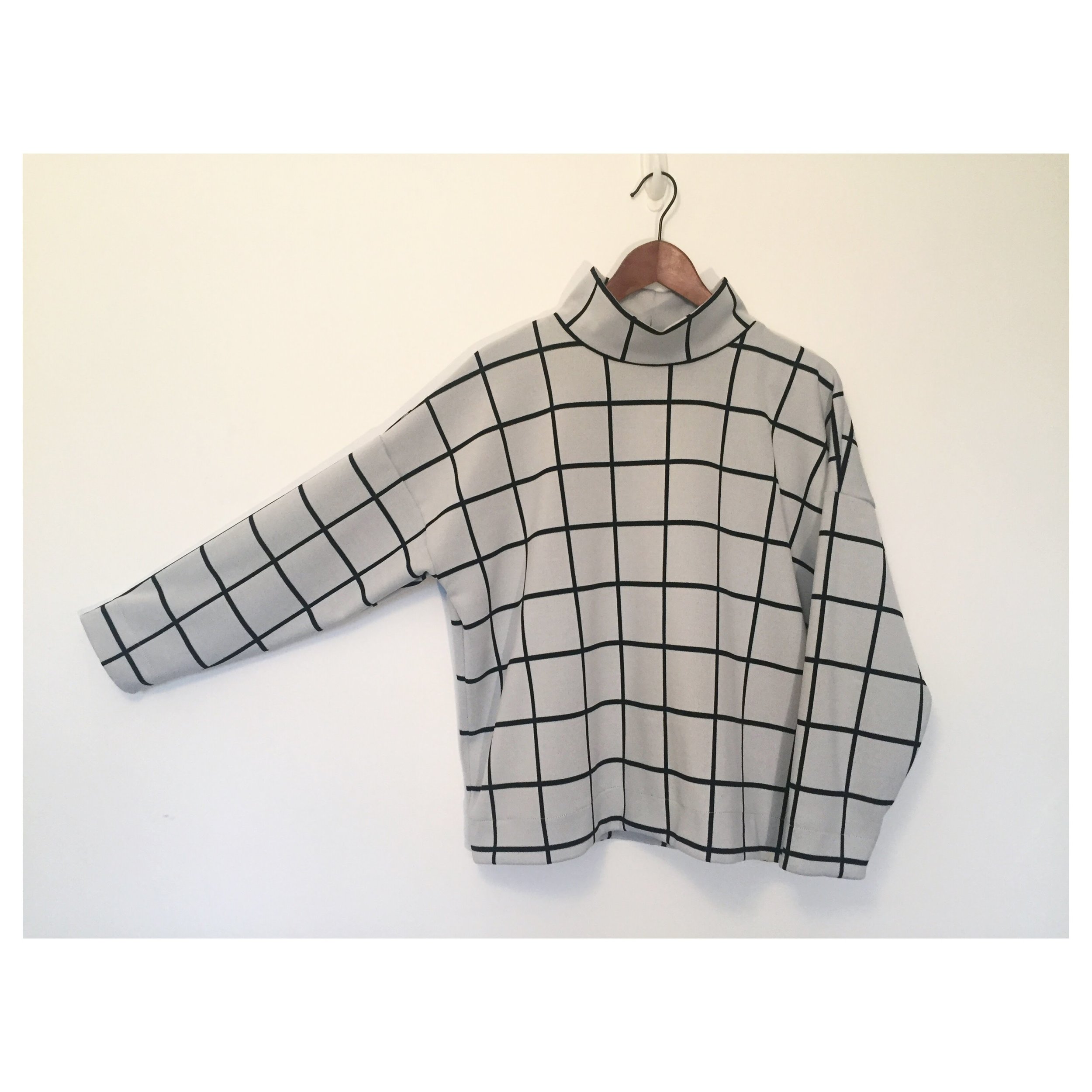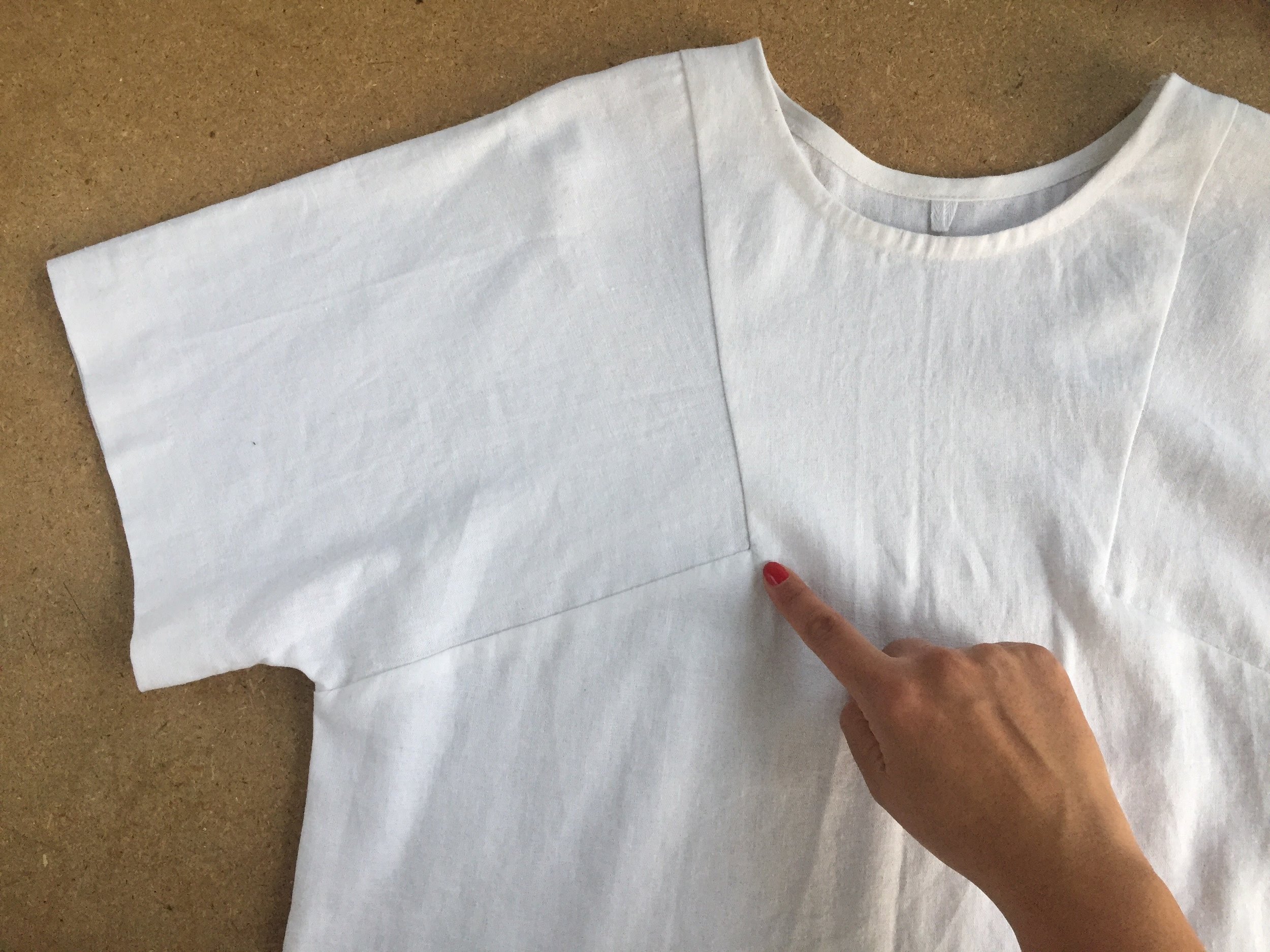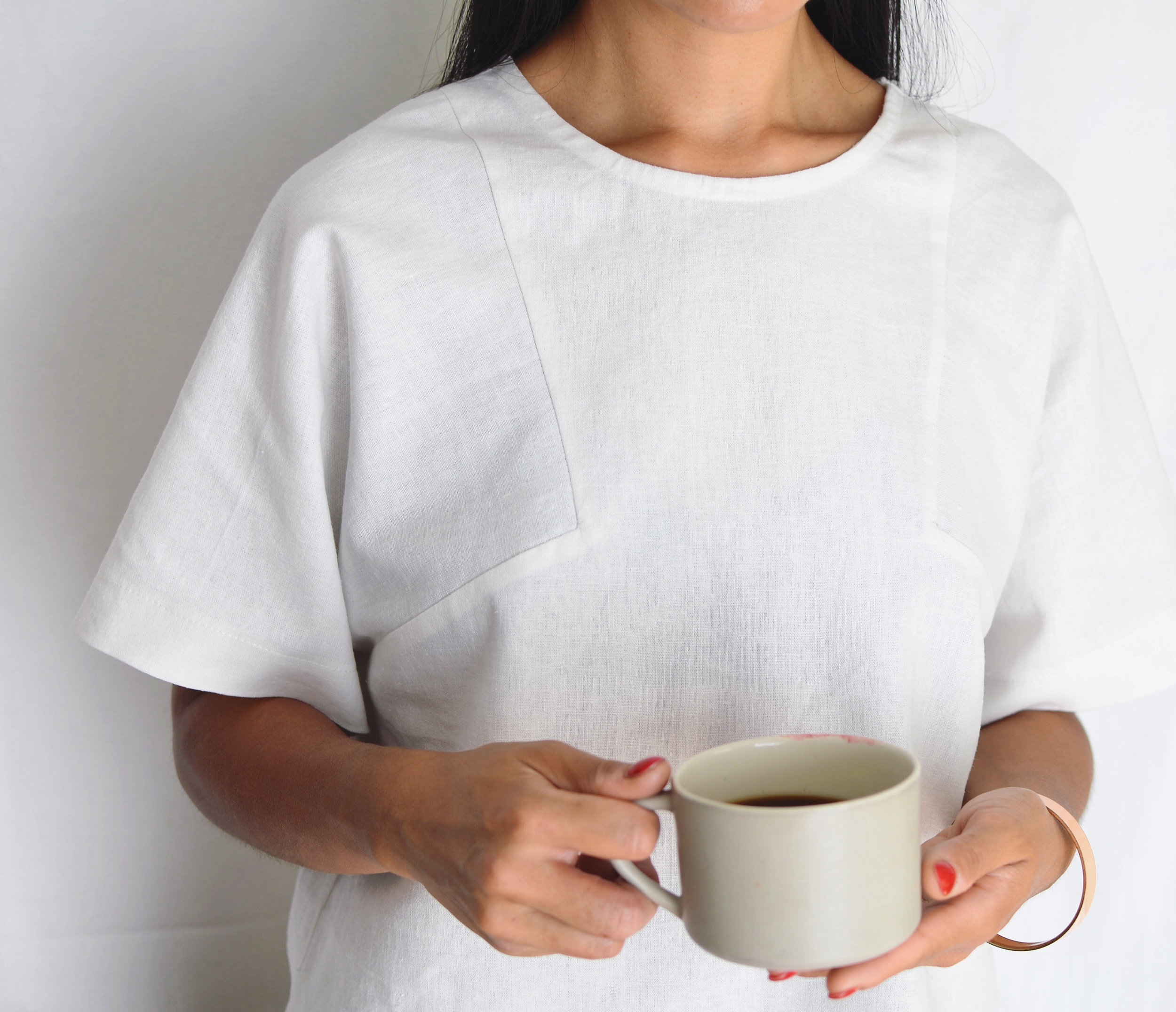Sharon Mendham is the creative force behind the UK’s Maven Patterns, a company she set up as a creative outlet for her designs after a career that has included work as a pattern cutter, seamstress, and screen printer. As Sharon says, it’s all come together as a perfect launching pad for this labour of love. Sharon’s designs are classics - wonderful lines, easy to wear, and very versatile. Her obsession with detail and technique means the patterns are also packed full of instructions to help you get from fabric to garment in the most elegant way possible. We just adore her approach and hope you enjoy hearing more about her. If you’re inspired to try your hand at one (or all!) of Sharon’s lovely patterns,, we’ve got them in stock here.
NEWTOWN HOUSE: Please tell us how you got started with Maven. What was the work you were doing before you started it? How old were you when you learnt to sew? Have you always had a wide creative streak?
SHARON MENDHAM: Let's start at the beginning. I was brought up in a house where it was normal to make stuff. My parents were obsessive DIY-ers before that was an actual thing. One of my earliest memories is trying to find a red washing up bowl to match the kitchen tiles and chopping up a three-piece sofa to make it into a corner one. Me and Dad taking down a wall while Mum was at work. You get the idea. We couldn’t afford to buy the latest this or that, so we’d make do and work with what we had. And we didn’t really make stuff for the sake of it, not just to have more stuff. There had to be a point to it, and usually, it was a practical solution. I didn’t realise for years as a kid that other people bought stuff and paid people to do these things. It gave things a value because of the time they took, but they would have to function and look good to earn and keep their place.
I can’t remember when I learnt to sew, I think I just assumed I could because my Mum did. My mum worked as a sample machinist so it was just part of life. Apparently, I was always making dolls’ clothes or cutting something up. When I was at junior school we had a visit from the ‘big’ school and were told we needed to decide what we were going to do for a job when we left school. I was 11. I was most likely the only person that would take that seriously and was then on a mission to find my life’s work by September. And then one night there was a girl on telly wanting to be a fashion designer and that was that decided! I studied fashion at college and quickly realised pattern cutting was for me. I never wanted to be a ‘famous’ designer I just wanted to quietly make stuff that would be worn.
After college, I worked as a pattern cutter for various suppliers to the High Street stores in the UK before eventually moving from London to Warwickshire. I wasn’t really learning anything anymore and it felt like there was just a constant churning out of clothes with no real thought behind it. Once in Warwickshire, I did a little bit of freelance work in the costume department at the Royal Shakespeare Company in Stratford-upon-Avon. And then worked from home as a seamstress doing alterations (excellent work to fit around children!). I did a short two-day screen printing workshop that my friend was teaching - which ended up lasting four years. And got me involved in two exhibitions. I started a blog in 2007 to keep track of the creative stuff. As the kids got bigger I, alongside my alterations business, I got a part-time job in a bridal shop, not sewing but selling (dressing people up in tulle and tiaras is not a bad way to pass the time). I frequently turned up with blue fingers from screen printing in the morning. Now, it’s not obvious immediately, but all of these random little jobs actually gave me a lot of skills that I use now. I’ve been constantly fitting, altering, sewing, selling and providing customer service thanks to them.
NH: Where did you get the idea for Maven, and how challenging was it for you starting out? And where does the name come from?
SM: Maven started as an idea just to sell patterns way back in 2012, I announced it on my old blog in January 2013 to try and make me do something with it, but I didn’t really know how. I didn’t really have a clue then about the Indie sewing pattern market and I didn’t know how to digitise a pattern.
Actual quote from my blog, dated January 2013: “You see, I'm planning to make patterns and sell them. Patterns for ladies to make clothes that they'll actually want to wear. More than once hopefully, so you can make your favourite dress or whatever again and again. And again if you fancy. Revolutionary I know, clothes women want to wear, not clothes that make you feel like mutton dressed as mutton. It could catch on.... I've just got to do it now.... you know me always a procrastinator...........why do today what you can easily put off by faffing on the internet............”
That kind of sums up my whole philosophy, really! It’s the way I dress anyway - I only really ever made or bought something if I thought I’d wear it for a long time, so it just made sense to me. I make for purpose and buy for purpose too. I was very inspired by the William Morris quote, it was like someone else had seen my family at work: “If you want a golden rule that will fit everything, this is it: Have nothing in your houses that you do not know to be useful or believe to be beautiful.”
Come October 2014, I’d made a few patterns and done a lot of research into creating PDF patterns and eventually invested and paid for the Pattern Workshop Course. This was the first time I’d actually invested in myself and in the business, so that was a major turning point. I built the website myself and pretty much did 12-hour days teaching myself Illustrator, fitting it around the alterations business and the bridal shop, until the following April when we released our first pattern, The Maria Apron named after my screen-printing friend - she’s actually a textile artist and wears it in her studio. The name Maven (rhymes with raven) means a trusted expert in a particular field, who seeks to pass timely and relevant knowledge on to others in the respective field. I took it to mean that we could all be our own experts in getting to know ourselves, and clothes are a part of that journey. Clothes really do reflect their owners and can give us confidence. I don’t think you need to know everything about sewing, but you can share what you know, learn from what others know and feel good about it, become an expert in what makes you happy! I really can’t be bothered with “You should wear this because you have that body shape,” for me it’s much more about “Wear what suits your personality.”
NH: In addition to pattern design, you also teach people to sew. What aspects do you enjoy most? And what's the one big message you'd want to give people who are trying to get started in these skills?
“It’s just a case of being honest with yourself - do you need all the things, bought or made, in all the colours? Probably not. ... We have to stop thinking short term happiness and strive for long term contentment.”
SM: I do really enjoy writing the sewing instructions for each pattern. They take an age to write, as I do all the illustrations too, but it’s actually one of my favourite parts. It’s constant problem-solving. I gained a good knowledge of construction working with some great machinists in London. They were really undervalued as they were not really seen, not glamorous, just women in the corner of the room. They were only too delighted to share what they knew, and it’s part of the reason I’m good at what I do - because I listened! My advice to a new maker would be: Don’t worry about making mistakes. It took me a frustratingly long time as a young pattern cutter to realise it was just a bit of paper, and you can quite literally stick it back together. But making mistakes is where you learn and grow. Keep a copy of the original pattern, just in case, and make a toile in a cheap fabric to practise and then enjoy the process!
NH: How do you spend your days, these days?
SM: Very little time actually pattern cutting and a lot of time tweaking stuff on the computer (which I actually love!). And I try and make sure there are some fun things, like exhibitions - you have to put stuff in to get stuff out. There is no life/work balance at all...and I’m the slowest producer of sewing patterns on the planet...but I’ve stopped worrying about it. That’s working well for me!
NH: What inspires you? And which aspects of your work do you most enjoy? And how do you power through the less-fun parts?
SM: It’s often a combination of fabric and problem-solving. It’s all a subconscious conversation with myself that I hadn’t vocalised until I started Maven. What gaps are in my wardrobe? How can I make a garment that's functional and easy to wear, interesting without being fussy, that is versatile and will offer longevity of wear. I often think there is a pattern cutter solution to clothing design which is based heavily on form, function and integrity of design.
I do really enjoy developing a pattern, I could toile quite happily for an eternity and writing the instructions is very satisfying. The less fun parts - I ignore for as long as possible and then once I start just keep going until it’s finished!
NH: Businesses like yours are very inspiring for people who are hoping to embrace the ideals of slow fashion - either by making their own clothes or buying one-off, handmade garments. Can you tell us a bit about your approach to slow fashion, and perhaps a bit about the change you hope to see as a result of people starting to really grab hold of these concepts?
SM: It’s just a case of being honest with yourself, do you need all the things, bought or made, in all the colours? Probably not. But something that makes you feel great, in a colour that resonates with you - that will bring you joy for a long time. And if you love it, surely you’ll look after it, so it automatically becomes less disposable. We have to stop thinking short term happiness and strive for long term contentment. I usually only buy or make for purpose or with the certainty that I’ll wear or use the item for years. This will change depending on your lifestyle, I work from home and am happy to wear the same clothes so I naturally need less clothes than someone in a different type of job. I don’t think any one action will change the fashion industry and the way it operates overnight, but they will notice a change in consumer habits. If we buy and make more thoughtfully, I’m hoping the industry will slow down with the overproduction of their ranges and break the cycle.
NH: What is ahead for Maven?
SM: Lots of plans...and more patterns! I’m very lucky that I work with Eve, my eldest daughter, now - she’s made printing and wholesaling the patterns possible. We’ve been sourcing fabrics so we can curate some kits and hopefully sell by the metre too. We are hoping to exhibit as some more shows next year. We’ve done a couple and it’s so lovely to chat to all the Makers that visit the stand.
All photos courtesy Maven Patterns




